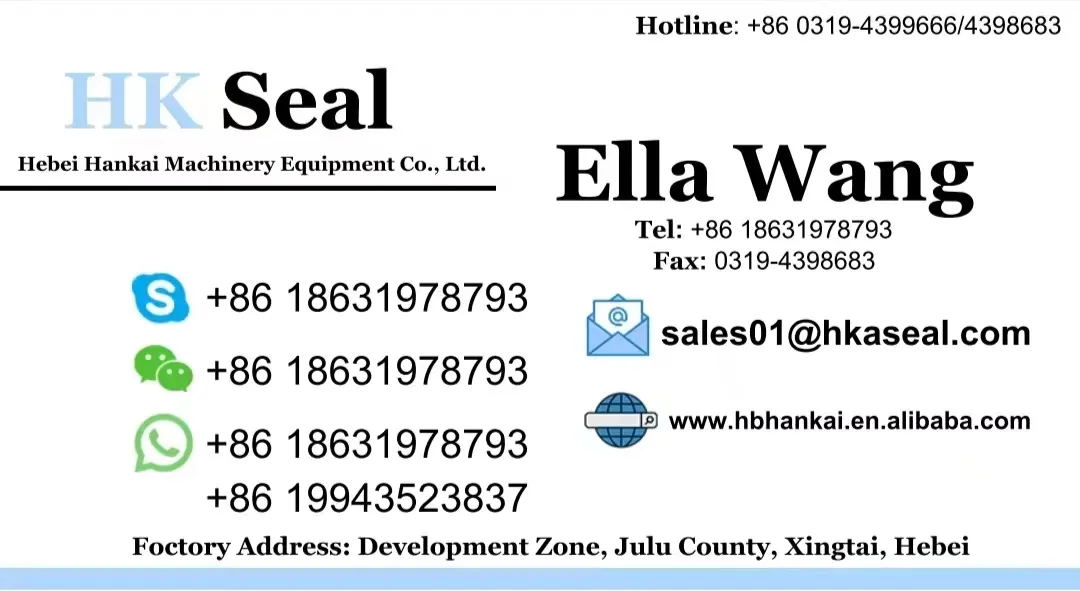Nov . 15, 2024 19:30 Back to list
hydraulic lift cylinder seal kits
Understanding Hydraulic Lift Cylinder Seal Kits
Hydraulic lift systems are essential components in various industrial applications, including construction, manufacturing, and even automotive services. At the heart of these systems are hydraulic lift cylinders, which are responsible for lifting heavy loads with precision and efficiency. However, the effectiveness and longevity of these cylinders largely depend on the quality and condition of their seal kits. In this article, we will explore the importance of hydraulic lift cylinder seal kits, their components, and tips for maintenance.
Hydraulic cylinder seal kits are designed to prevent hydraulic fluid from leaking out of the cylinder, ensuring optimal performance. A typical seal kit includes different types of seals such as O-rings, piston seals, rod seals, and backup rings. Each component has a specific role. For instance, rod seals prevent fluid leakage from the rod side of the cylinder, while piston seals ensure that the hydraulic fluid can generate sufficient pressure for lifting.
The materials used in seal kits are often engineered to withstand harsh conditions. Common materials include nitrile rubber, polyurethane, and PTFE (Teflon), each offering unique benefits such as resistance to wear, temperature fluctuations, and chemical exposure. When selecting seal kits, it's crucial to choose those compatible with the hydraulic fluid being used, as incompatibility can lead to premature failure.
hydraulic lift cylinder seal kits

Regular maintenance of hydraulic lift cylinder seal kits is vital for prolonging the life of the equipment. Signs of wear or damage, such as leaking hydraulic fluid or reduced lifting capacity, should be addressed immediately. Regular inspections can help identify these issues before they escalate, saving time and reducing costs associated with major repairs.
When it comes to replacing seal kits, it is essential to follow proper procedures to ensure the new seals fit correctly and provide a reliable seal. This includes cleaning the cylinder thoroughly, inspecting for any signs of wear on the cylinder itself, and carefully installing the new seals without damaging them.
In conclusion, hydraulic lift cylinder seal kits are critical to the performance and longevity of hydraulic systems. By understanding their components, selecting high-quality materials, and conducting regular maintenance, operators can ensure efficient and safe operation of hydraulic lift cylinders. Investing time and resources into maintaining these seal kits ultimately leads to increased productivity and reduced downtime, making it a wise choice for any industry relying on hydraulic systems.
-
TCN Oil Seal Metal Ring Reinforcement for Heavy Machinery
NewsJul.25,2025
-
Rotary Lip Seal Spring-Loaded Design for High-Speed Applications
NewsJul.25,2025
-
Hydraulic Cylinder Seals Polyurethane Material for High-Impact Jobs
NewsJul.25,2025
-
High Pressure Oil Seal Polyurethane Coating Wear Resistance
NewsJul.25,2025
-
Dust Proof Seal Double Lip Design for Construction Equipment
NewsJul.25,2025
-
Hub Seal Polyurethane Wear Resistance in Agricultural Vehicles
NewsJul.25,2025
-
The Trans-formative Journey of Wheel Hub Oil Seals
NewsJun.06,2025
Products categories
















